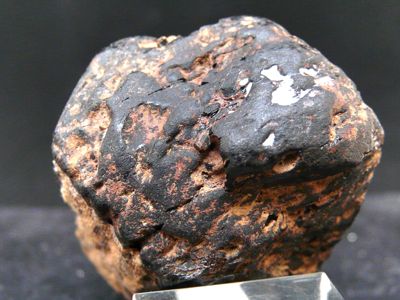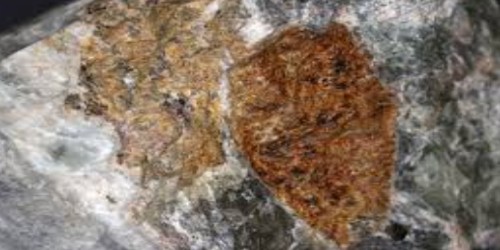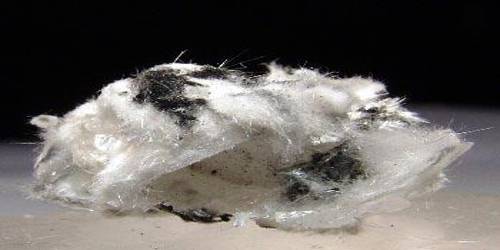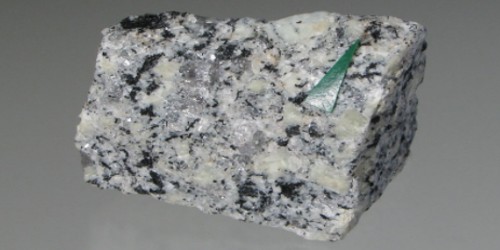Kaersutite is a member of the hornblende series together with oxyhornblende and katophorite. It is a rare titanium bearing member of the Calcic Clino-Amphibole Subgroup of the Amphibole Group of minerals that includes Actinolite, Ferro-edenite, Kaersutite, Pargasite, Richterite, and Tremolite.
It was first described in 1884 and is named for Qaersut (formerly Kaersut), Umanq district in northern Greenland, near Skaergaard. It also appears in metasomatized mantle xenoliths.
General Information
- Luster: Vitreous
- Hardness: 5 – 6
- Crystal System: Monoclinic
- Cleavage: {110} Perfect

Fig: Kaersutite
Properties
Kaersutite occurs in intermediate alkali igneous rocks and is one of the rock-forming amphiboles typically found in nepheline syenite. Crystals are commonly very dark brown to black, well-formed, prismatic phenocrysts to about 10 cm with vitreous luster.
- Color: Dark brown, Black.
- Density: 3.2 – 3.28, Average = 3.24
- Diaphaneity: Translucent to Subopaque
- Fracture: Brittle – Conchoidal – Very brittle fracture producing small, conchoidal fragments.
- Hardness: 5-6 – Between Apatite and Orthoclase
- Luster: Vitreous – Resinous
- Streak: brownish gray.
Occurrence: Common as phenocrysts in alkalic volcanic rocks; in gabbroic and peridotitic nodules in alkalic basalts; in syenites, monzonites, carbonatite tu®s, and alkalic gabbros.
Kaersutite is found In Greenland, from Osterfeld, near Qaersut, at NOgssuaq, and elsewhere in the Kangerdlugssuaq Fjord and Skaergaard areas. It is relatively rare but may be found in alkaline rocks such as trachyte, trachyandesite, syenite, monzonite, and lugarite (rare alkaline sub-volcanic rock).
Association: Titanian augite, rhÄonite, olivine, ilmenite, spinel, plagioclase, titanian pargasite.
Information Source:
















